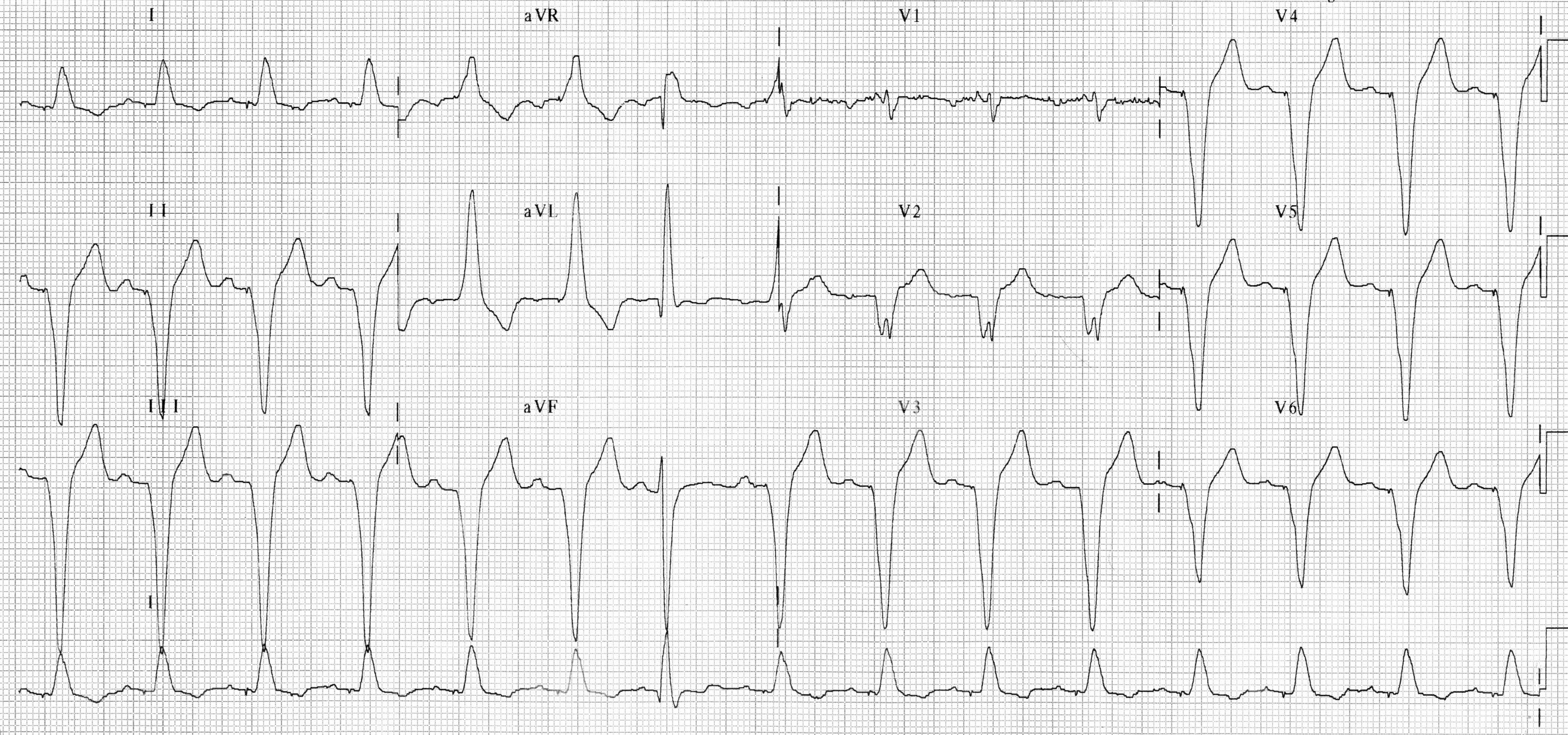@Aprz, I seriously need to review. Axis deviation and polarity is something I've always had difficulty wrapping my head around.
http://www.ems12lead.com/2008/10/04/axis-determination-part-i/
If you memorize and visualize Einthoven's triangle, I think that makes it a lot easy.
RA to LA = lead I
If mostly positive, the mean QRS vector is going right to left or towards 0 degree.
RA to LL (or towards the foot) = lead II
LA to LL (or towards the foot) = lead III
If both lead II and III are mostly positive, the mean QRS vector is going south towards 90 degree (II is about 60 degree and III is about 120 degre)
aVF (F for foot) starts perpindicular to lead I (lead I is 0 degree) and goes through the LL lead (or foot). aVF is 90 degree.
In Dubin's book, he uses I and aVF to determine which quadrant the mean QRS vector is going.
+I, +aVF = normal axis (between 0 to 90 degree)
cause I is right to left, aVF is going towards the foot
note: II and III mostly go in the same direction as the foot (60 and 120 degree) and will probably most likely be mostly positive
+I, -aVF = left axis deviation (between 0 to -90)
cause I is right to left, but now aVF ia going away from the foot.
note: II and III mostly go in the same direction as the foot so they would be mostly negative if it is going away from the foot a lot such as in a left anterior fascicular block.
-I, +aVF = right axis deviation (between 90 to 180 degree)
avF is going towards the foot, but now the direction of the mean QRS vector is going left to right. I associate this usually with pulmonary disease or left posterior fascicular block (rare). Even with right ventricular hypertrophy/pulmonary disease, this is kinda rare in my opinion cause of the size of the right ventricle. I am usually suspicious of lead reversal of RA and LA if I see this, or I take into consideration of it.
-I, -aVF = extreme right axis deviation
This is also pretty rare and I will consider lead reversal. If somebody has LAD on their normal ECG and RA and LA lead are reversed, it would make it look like ERAD on the 12 lead. Specific for ventricular rhythm, but not sensitive. Just because there isn't ERAD doesn't mean it is not ventricular (see people say "no ERAD, it can't be VT" all the time).
I draw the augmented leads on top of Einthoven's triangle.
aVF is perpindicular to I and goes through the LL lead. (again, I is 0 degree so aVF is 90).
aVL is perpindicular to II and goes through the LA lead. (-30 degree)
aVR is perpindicular to III and goes through RA lead. (-150 degree)
note: If this is positive, the mean QRS vector is towards ERAD.
It is usually pretty mind blowing to people when I tell them and draw if at the same time, lol.

